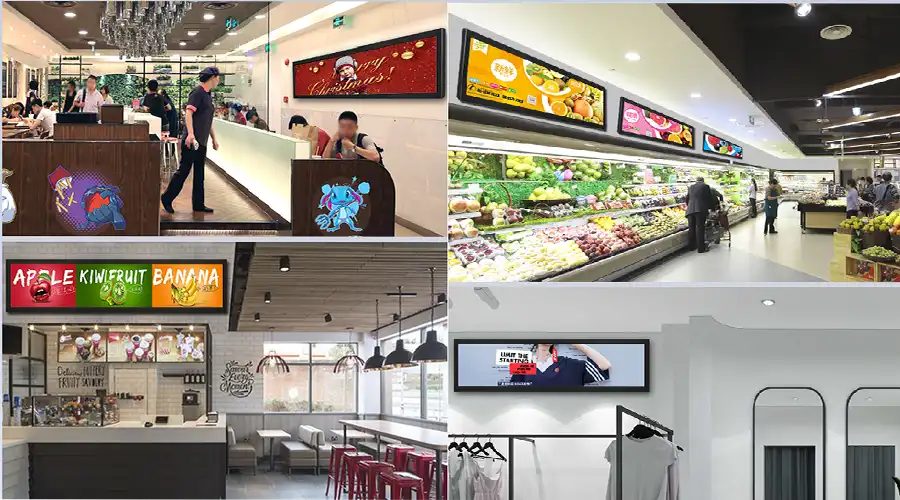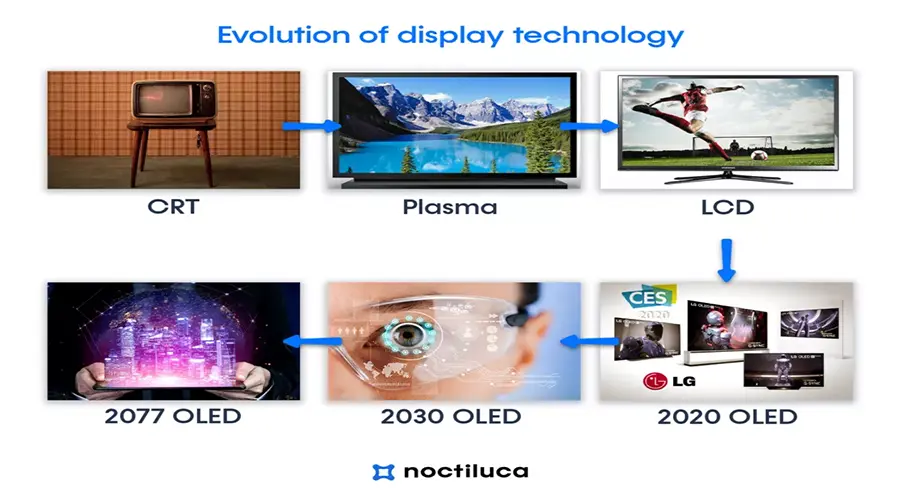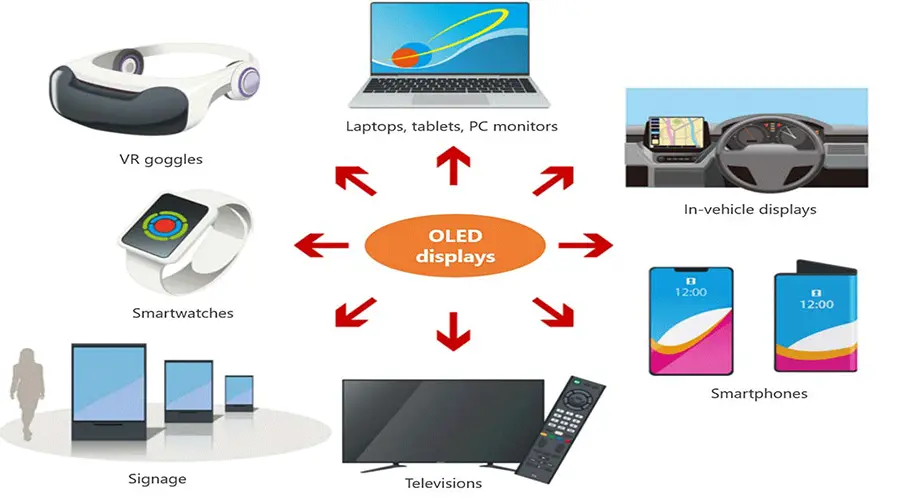Everything you need to know about ultra‑wide, bar‑type LCD signage: applications, technology, selection, mounting, content, reliability, comparison, customization, FAQs, and purchasing.
1. What Is a Stretched BAR LCD?
Stretched BAR LCD, also known as bar‑type LCD, ultra‑wide LCD, or stretch display, is a liquid crystal display with a significantly wider aspect ratio than conventional 16:9 screens. By utilizing specially manufactured long panels or precision‑cut panels from standard mother glass, BAR LCDs create an elongated canvas ideal for narrow locations such as shelves, door headers, vehicle interior fascia, elevator lobbies, corridors, and production lines. These displays deliver fine pixel density, color fidelity, and smooth motion—attributes that are essential for close‑view digital signage and mission‑critical information bars.
Unlike LED strip modules that are composed of discrete diodes, BAR LCD panels provide continuous imagery with high pixel density, making them perfect for text‑heavy, brand‑critical, and near‑field applications. They are also distinctly different from e‑paper bars in refresh speed and color vibrancy, enabling video playback, dynamic transitions, and synchronized messaging across networks.
1.1 Key Advantages
- Space efficiency: Leverages narrow, underutilized real estate where 16:9 panels do not fit.
- Close‑range clarity: High pixel density and IPS/VA panels with wide viewing angles enhance legibility for prices, alerts, and branded content.
- High brightness options: 1000–3000 nits configurations for window‑front or semi‑outdoor use, combined with anti‑glare/anti‑reflective treatments.
- Operational durability: Engineered for 24/7 duty cycles with robust thermal design, conformal coatings, and protective front glass where needed.
- Flexible platforms: Android, Windows, or Linux media players—integrated or external—support diverse content workflows and third‑party CMS integrations.
- Low TCO: Smart power scheduling, light sensors, and efficient backlight drivers reduce operating cost.
1.2 Technology Basics
BAR LCDs are built around a TFT LCD matrix with LED backlighting. Depending on the project, you may encounter native elongated panels or cut‑cell variants derived from standard aspect mother glass. Advanced optical stacks—polarizers, diffusers, and protective coatings—manage glare and improve readability. Electronics include T‑Con boards, scaler boards, and optional embedded media players. The enclosure may be open‑frame for integrators or finished with a slim bezel for commercial environments.
Brightness is governed by backlight current and optical efficiency. For high‑ambient installations, panel luminance must overcome reflected light from glass surfaces. Thermal management—via heat‑spreaders, ventilation slots, or silent active cooling—ensures backlight longevity and color stability. Firmware features often include burn‑in mitigation, pixel shifting, and RTC (real‑time clock) for scheduling.
2. Why BAR LCD Instead of Alternatives?
Choosing the right signage technology hinges on proximity, content type, ambient conditions, and lifecycle costs. BAR LCDs excel where detail, typography, and brand color accuracy matter at close range. Compared with small‑pixel LED bars, they avoid visible pixel structure without requiring costly ultra‑fine pitches. Versus e‑paper, BAR LCDs enable fluid video and full‑color motion, critical for promotions and dynamic alerts. They also integrate neatly into shelving, door frames, and vehicle panels where standard displays would appear bulky or require intrusive carpentry.

3. Industry Use Cases
3.1 Retail & Grocery
In retail, shelf‑edge BAR LCDs transform price labels into dynamic media. Promotions, cross‑selling messages, QR‑based coupons, and planogram guidance can all coexist. End‑cap messaging benefits from long horizontal canvases that maintain sightlines without blocking merchandise. Cooler door bars amplify brand impact with upright content along mullions, while anti‑fog and high‑brightness options maintain readability against condensation and glare.
- Shelf edge dynamic pricing and promotional loops
- End‑cap storylines and cross‑category recommendations
- Cooler/freezer door strips with AR/AG glass
- Store navigation lines and queue guidance
3.2 Transportation & Passenger Information
Transit environments rely on clear, glanceable information. BAR LCDs fit above doors, along carriage walls, or into bus shelters as slim tickers. With robust mounting and conformal coatings, they withstand vibration and humidity. Sync features support real‑time arrivals, service alerts, and multilingual crawls. For semi‑outdoor shelters, high‑brightness, UV‑resistant materials, and wide operating temperatures are recommended.
3.3 QSR, Hospitality, and Corporate
Quick‑service restaurants deploy BAR LCDs as menu extensions, allergen bands, and order status tickers. Hotels use them for corridor wayfinding, lounge ambience, or meeting room door signs where a narrow profile avoids clutter. Corporations place them in lobbies as news bands or KPIs, providing constant context without dominating the wall.
3.4 Industrial & Manufacturing
On production floors, long bars deliver Andon alerts, progress bars, and safety reminders along work cells. The narrow geometry fits between conduit runs and machine guards. Wide viewing angles ensure readability across the aisle; protective front glass and sealed chassis guard against dust, oils, and cleaning agents.
3.5 Museums, Exhibitions, and Public Spaces
Curators translate timelines and captions into elegant bands that frame artifacts without distraction. For exhibitions, BAR LCDs integrate into plinths, rails, and dioramas, synchronizing with audio guides or sensors to adapt content as visitors approach.
4. Selection Guide
Picking the right BAR LCD begins with clarifying viewing distance, ambient light, content type, integration constraints, and service model. The following table summarizes practical parameters to evaluate across commercial projects. Note: we intentionally omit a size catalog here and focus on performance, control, and environmental fit.
| Parameter | What It Means | Recommended Range/Option | Project Tips |
|---|---|---|---|
| Brightness (nits) | Panel luminance for ambient readability. | Indoor: 400–700; Window/Semi‑outdoor: 1000–2500; Outdoor (protected): 2000–3000 | Pair with AG/AR glass; add ambient light sensor for energy savings. |
| Viewing Angle | Clarity off‑axis for long corridors or aisles. | IPS: 178°/178° typical; VA: higher contrast, slightly tighter angles | Retail aisles benefit from IPS to maintain color stability. |
| Contrast Ratio | Perceived depth and readability of text and UI elements. | 1000:1–3000:1 depending on panel type | High contrast reduces eye strain in ticker‑style UIs. |
| Surface Treatment | Mitigates glare, smudges, and reflections. | AG (matte), AR (anti‑reflective), AF (anti‑fingerprint) | Use AR for glass‑fronted cabinets; AG for overhead lighting. |
| Operating Temperature | Environmental durability for semi‑outdoor or cold‑case use. | -20°C to 60°C (typical wide‑temp) | Plan pre‑heat logic for freezer doors; ensure ventilation. |
| Power Input | Electrical compatibility at site. | 12V/24V DC or 100–240V AC | Standardize across sites to simplify spares and service. |
| Control Interfaces | Integration and remote management. | HDMI/DP, USB, LAN, RS‑232, Wi‑Fi; optional 4G/5G | Serial control supports kiosk heartbeat and watchdogs. |
| Embedded Platform | On‑board media player vs. external. | Android, Windows, or Linux | Android suits templated signage; Windows/Linux for custom apps. |
| Protection | Resistance to impact, dust, humidity. | Tempered glass, IK rating, conformal coating | Consider IP sealing for kitchens, factories, or platforms. |
| Duty Cycle | Continuous operation capability. | Rated 24/7 with MTBF reports | Validate with burn‑in and thermal imaging during pilots. |
4.1 Mounting & Integration
Mounting strategy affects lifespan, serviceability, and aesthetics. BAR LCDs come as open‑frame modules for OEM integration or as finished displays with slim bezels, VESA patterns, and concealed I/O. For rail or shelf systems, magnetic or bracketed fixtures speed deployment while preserving planograms. Elevator or corridor installs may favor recessed mounting with front service.
| Mounting Mode | Where It Shines | Considerations |
|---|---|---|
| Open‑frame | Kiosks, vehicle fascias, custom cabinetry | Requires precise cutouts, thermal design, and EMC planning. |
| Recessed (flush) | Corridors, museums, corporate lobbies | Front service access and bezel alignment are critical. |
| Surface wall‑mount | Quick retrofits, retail walls | Ensure cable management and anti‑theft fixings. |
| Shelf/rail mount | Grocery shelf edge, pharmacy, convenience | Account for power distribution and uniform tilt angle. |
| Suspended | Stations, concourses, queue zones | Check vibration damping and glare from overhead lights. |
4.2 Display Optimization
- Color calibration: Factory white balance and LUTs ensure brand‑accurate palettes across networks.
- Uniformity: Multi‑zone backlight tuning and binning reduce Mura and panel variance.
- Motion clarity: 60 Hz is adequate for signage; consider black frame insertion or higher refresh for ticker motion comfort.
- Burn‑in mitigation: Pixel shifting and content loop diversity protect static logos.
- Content aspect: Design ultra‑wide templates; avoid stretching assets. Use safe areas to prevent clipping in recesses.

5. System & CMS
System architecture determines how quickly your team can distribute content, maintain uptime, and scale. BAR LCDs can embed Android media players for turnkey deployments or pair with external Windows/Linux PCs for complex data integrations. A robust CMS enables scheduling, templating, role‑based access, player health monitoring, and API hooks for POS/ERP/BI systems.
5.1 Platform Options
- Android SoC: Lightweight, economical, widely supported by signage CMS vendors; ideal for templated loops and cloud publishing.
- Windows: Broad app compatibility, strong driver ecosystem, and enterprise management via Group Policy/Intune.
- Linux: Stable, secure, customizable for integrators building bespoke players or edge AI pipelines.
5.2 Connectivity & Control
- LAN/Wi‑Fi with fallback to 4G/5G for remote sites.
- RS‑232 and CEC for power, input switching, and status polling.
- EDID management to avoid scaling artifacts on ultra‑wide canvases.
5.3 Security
- Harden OS images: Disable unused services, enforce signed updates.
- Use TLS for content delivery; rotate API keys and tokens.
- Network segmentation to isolate signage from payment systems.
6. Quality & Reliability
Reliability starts with components and validation. Industrial‑grade BAR LCDs undergo temperature cycling, vibration, ESD, and prolonged burn‑in. Backlight lifetime, measured to 50% brightness (L50), commonly exceeds 50,000 hours with appropriate thermal management. Protective coatings guard PCBs against humidity; tempered cover glass protects against accidental impacts in public spaces.
| Test/Metric | Typical Criteria | Why It Matters |
|---|---|---|
| Thermal cycling | -20°C to 60°C, multiple cycles | Prevents warping, delamination, and timing drift. |
| Humidity exposure | 85% RH at 40°C, 48–96 hrs | Validates conformal coating and sealing. |
| Vibration | IEC/EN profiles for transport/vehicle | Secures connectors and prevents pixel defects. |
| Burn‑in | 72–168 hrs full‑field patterns | Early failure screening and uniformity checks. |
| ESD immunity | ±8 kV air, ±4 kV contact | Public‑touch readiness and service safety. |
| EMC/EMI | CE/FCC compliance | Site approvals and interference control. |

7. Comparison with Alternatives
7.1 BAR LCD vs. LED Bar
- Image quality: LCD offers continuous surfaces and high pixel density; LED requires sub‑2.0 mm pitches to avoid pixelation at arm’s length.
- Power & heat: LCDs are generally more power‑efficient for small heights; less thermal load in confined recesses.
- Cost: For close‑view, LCD is typically more economical than fine‑pitch LED.
7.2 BAR LCD vs. E‑paper Bar
- Motion: LCD supports video; e‑paper does not (or only very slow updates).
- Readability: E‑paper excels in sunlight; LCD requires high nits and AR coatings outdoors.
- Power: E‑paper wins in static power draw; LCD with scheduling narrows the gap for dynamic content.
7.3 BAR LCD vs. 16:9 Arrays
- Aesthetics: Single seamless canvas vs. multiple bezels or awkward cropping.
- Integration: BAR LCDs fit in slim slots; tiled 16:9 often protrude and complicate carpentry.

8. Customization Options
Commercial rollouts benefit from tailored configurations. BAR LCDs support a wide spectrum of customization to match brand standards, environmental challenges, and IT policies.
- Coatings: AG/AR/AF glass; anti‑fog for cold cases.
- Electronics: Custom I/O, GPIO triggers, PoE power, watchdog timers.
- Mechanicals: Bezel color, logo printing, mounting hole patterns, cable routing.
- Touch: PCAP (projected capacitive) for interactive tickers; anti‑glare etched glass.
- Compute: SoC performance tiers, memory/storage options, TPM or secure boot.
- Firmware: Kiosk mode, remote diagnostics, OTA packages, pixel‑shift intervals.
- Packaging: Retail‑safe pallets, quick‑deploy kits with pre‑terminated cabling.

9. Frequently Asked Questions
Q1. What is the difference between native stretched panels and cut panels?
Native stretched panels are manufactured at ultra‑wide ratios and can offer optimized cell structures and backlight diffusion for the elongated geometry. Cut panels are derived from standard aspect mother glass using precision processes. Both can perform excellently; what matters is supplier process control, sealing, and backlight uniformity. Request uniformity maps and aging data during evaluation.
Q2. Do I need 2500+ nits for window‑front deployments?
It depends on glazing orientation and reflections. For north‑facing windows or shaded malls, 1000–1500 nits with AR glass may suffice. For direct or oblique sun, 2000–3000 nits plus AR—and careful angle placement—deliver reliable readability.
Q3. Will vertical installation affect lifespan?
Orientation itself is fine if thermal paths are respected. Ensure venting does not trap heat at the top of the chassis. For sealed cabinets, add conduction paths or quiet fans with filters. Verify with thermal imaging under worst‑case content (full‑white at max brightness).
Q4. Can I use one CMS for both shelf bars and large lobby bars?
Yes. Choose a CMS that supports custom aspect ratios, multi‑zone layouts, synchronized playback, and API‑driven data blocks. Templating should abstract different aspect ratios so designers maintain brand consistency without manual resizing each time.
Q5. How do I prevent image retention?
Use scheduled content rotation, pixel shifting, and periodic full‑field sweeps. Avoid static white UI bands at 100% brightness. If long static elements are required, reduce peak brightness or apply subtle motion.
Q6. What certifications should I look for?
CE/FCC for EMC, RoHS for materials, UL/ETL for safety in North America, and any required rail or vehicle standards in transit applications. Food retail may need specific IP ratings and anti‑fog glass validation.
10. Procurement Checklist
- Brightness tier matched to ambient conditions (and presence of AR/AG glass).
- Panel type (IPS/VA) with documented viewing angles and uniformity maps.
- Operating temperature and humidity ranges validated by reports.
- Power input, connectors, and cable management plan.
- Embedded platform choice with CMS compatibility list.
- Mounting mode, service access (front vs. rear), and anti‑theft features.
- Coatings: AG/AR/AF, optional anti‑fog, and scratch resistance.
- Reliability testing results: burn‑in, ESD, vibration (if applicable).
- Security posture: OS hardening, OTA process, and device identity management.
- Pilot plan: sample evaluation, on‑site mockups, and thermal validation.
11. Shopify SEO Notes
To maximize organic visibility for “Stretched BAR LCD” queries, align your product and content structure with search intent and schema best practices.
- Primary keywords: “Stretched BAR LCD”, “bar‑type LCD display”, “ultra‑wide LCD signage”. Include variants like “bar LCD for retail”, “passenger information display”.
- On‑page: Use one H1 per page, descriptive H2/H3 subheads, and concise meta descriptions. Maintain readable paragraphs and scannable bullets.
- Schema: Implement Product, FAQ, Organization, and BreadcrumbList structured data to enhance SERP presence.
- Internal links: Link from this guide to your individual product SKUs, case studies, and download center (spec sheets, CAD, mounting guides).
- Media: Provide compressed, high‑contrast images or illustrations with ALT text that includes context (e.g., “retail shelf bar LCD with AR glass”).
- Speed: Lazy‑load media, serve WebP, and minimize render‑blocking resources. Fast pages correlate with lower bounce on mobile.
- Localization: If you also target Chinese‑language queries, create a parallel CN page and cross‑link with hreflang.
12. Samples, Quotes, and Consultation
Whether you are planning a retail rollout, transit retrofit, or industrial dashboard, a focused pilot is the fastest route to confidence. Prepare two content loops—one brand‑heavy, one data‑heavy—then validate brightness, reflection control, and serviceability on‑site. From there, standardize your mounting, cable kits, and CMS templates to accelerate scale.
Tip: If you already have specific dimensions or cutout constraints, share DWG/DXF drawings and target brightness so the engineering team can confirm thermal, optical, and mounting compatibility early.
Appendix: Content Design Tips for Ultra‑Wide Canvases
- Typography: For 1–2 m viewing, aim for ≥24 px equivalent cap height at native resolution. Increase tracking slightly on thin weights.
- Motion: Keep horizontal scroll speeds under 120 px/s for comfortable saccades; add pauses between headlines.
- Color: Use high‑contrast palettes; avoid pure white backgrounds at high brightness to reduce glare and power draw.
- Safe zones: Reserve 16–24 px margins to account for bezels and recess tolerances.
- Data blocks: Pre‑compose templates with modular regions for prices, SKUs, or ETA feeds to minimize operator errors.
Appendix: Maintenance Playbook
- Quarterly: Clean AR/AG glass with approved agents; check brackets and strain relief.
- Biannual: Review brightness schedules vs. seasonal daylight; update firmware and CMS players.
- Annual: Thermal audit on representative units; recalibrate color where brand fidelity is critical.
- As needed: Replace filters (if any), inspect seals in humid or greasy environments.
Maintaining consistent brightness and color over time sustains perceived quality and reduces rework in creative assets.





Leave a comment
This site is protected by hCaptcha and the hCaptcha Privacy Policy and Terms of Service apply.